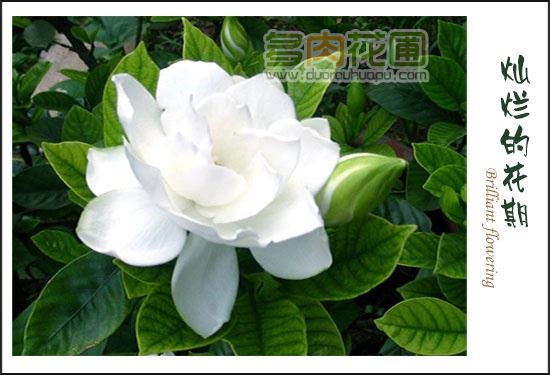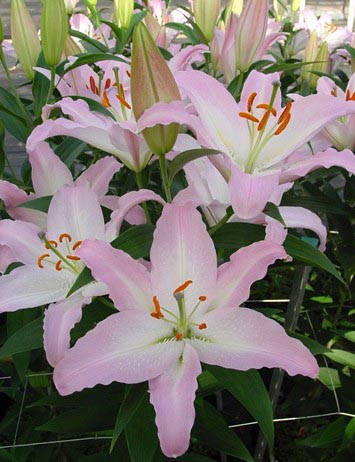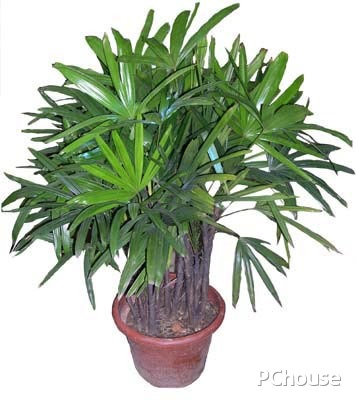Culture method of Gardenia jasminoides
Gardenia is not only a good helper to improve the home environment, but also an expert in improving the air quality of the community, so how can we maintain it to make it grow better?
First, do a good job in breeding. We know that the reproduction of gardenia can be divided into sexual reproduction and asexual reproduction.
1. Sexual reproduction: generally choose mature fruits that are full and crimson in color, bask in the shell or dry them. Before sowing, cut the pericarp of the seeds with scissors, dig out the seeds, rub them out in hot water, remove floating seeds or impurities, and then fish out the sunken full seeds.
2, asexual reproduction: cutting method-can be divided into spring and autumn cutting, cuttings select healthy 2-3-year-old branches, cut 10-12 cm, cut off the lower leaves, the top two leaves can be retained and cut off half, first dipped in vitamin B12 injection, and then obliquely inserted in the bed, leaving only one section above, pay attention to shade and maintain a certain humidity, transplant or plant on a pot when rooting seedlings begin to grow.
Second, there are special points to pay attention to in nursing gardenia at ordinary times.
1. Give it an acidic environment. The alkali content in soil, water and fertilizer all made the plant unable to absorb iron, but affected the formation of chlorophyll, withered branches, scorched leaves, and even died. To use fertile, loose, well-drained acid soil, such as pine sawdust thoroughly mixed into the soil, the use effect is also very good.
2. Control the amount of light. Its temperament likes shade, avoid scorching sun exposure, but often some people mistakenly think that gardenia requires full shade, resulting in mistakes in cultivation. In fact, while paying attention to cultivating its shady environment, it is necessary to maintain 60% light throughout the day in order to meet its growth needs.
Third, prevent diseases.
1, chlorosis: the occurrence is more common, caused by a variety of reasons, so it is necessary to take different measures for prevention and treatment, generally apply rotten human feces and urine or cake fertilizer. When the young leaves are deficient in iron, the veins of the young leaves lose green and yellowing, which will seriously yellowed the whole leaves, and even scorched leaves and branches wither, resulting in plant death. To this kind of situation, can spray 0.2% Mel 0.5% ferrous sulfate solution to prevent and cure.
2. Soot disease: it occurs in branches and leaves. After it is found, it can be scrubbed with clean water, or sprayed with 0.3 Baume stone sulfur mixture, 1000-1200 times carbendazim.
3, rot disease: often occurs in the lower trunk, stem expansion, cracking, found immediately scraped or coated with 5-10 degree stone-sulfur mixture, several times can be effective.
How to raise Gardenia jasminoides? Introduction to the Culture method of Gardenia jasmine
Gardenia is very beautiful, every time it blossoms, so beautiful, so white. The balcony or indoor bedroom planted at home is very beautiful, so how to raise gardenia? Especially potted plants, what details should be paid attention to? Below by the love nest decoration network to share with you the cultivation method of gardenia.
The meaning of Blue Rose the efficacy and function of dandelion the flower language of lavender how to raise azaleas
How to raise gardenia? Introduction of culture methods of Gardenia jasminoides
Gardenia likes warm climate and acidic soil and water, and is suitable for growing in the south, and the north also needs careful care to survive. Otherwise, the cultivation methods of gardenia after death are as follows:

1. Choose acidic potted soil! Potted gardenia soil is required to have an acidic PH value of 5-6. When cultivating gardenia, choose rotten leaf soil, peat soil or garden soil with half of sawdust retting, and remember to use wall soil and cinder as cultivation soil.
2. Watering frequently in the process of breeding! In the process of gardenia culture, the surface of the basin soil needs to be watered when it is dry, and a spray can be used to pour water on the leaf surface in the evening. If the growth is too prosperous and the internodes are longer, they will not be watered in the evening and will be watered again when the sun comes out in the morning.
3. Fertilize regularly! 3% rotten cake fertilizer can be added to the culture soil as base fertilizer. The alum fertilizer made from cake fertilizer and ferrous sulfate retting was watered once a week during the growing season, 0.1% potassium dihydrogen phosphate solution was irrigated once or twice in the bud period, and the fertilizer was stopped when the temperature was above 35 ℃ in summer and below 15 ℃ in autumn.
4. More watering and more light! Gardenia likes the sun, but is afraid of the heat and scorching sun. It grows best in a semi-shady place, and 60% of the light throughout the day is enough to meet the needs of its growth.
5. Hibernation and antifreeze in winter. When the temperature drops in winter, the severe cold will damage the roots of gardenia, especially in the north, early in winter and long in winter, so it is very important for gardenia to prevent freezing in winter. It is necessary to wrap the potted flowers with foam and other thermal insulation materials, protect the roots, and put them in the leeward and sunny place to survive the winter, which can recover quickly in spring and bloom early.
6. Change the soil in spring! Indoor potted gardenia is about 30 centimeters high to change the soil, if it is to change the pot, then even the soil into the new pot. It is better to change the soil in spring and March, so that it is easier to grow new roots after root injury.
7. Prune before winter! Three main branches are selected according to the shape of the tree, and other branches sprouting from the roots should be cut off at any time. Remember that gardenia should not be cut short in spring, otherwise it would not blossom in that year.
[related recommendations]
Why do gardenia leaves turn yellow?
What does Kangnai Xinhua stand for? An introduction to the symbolic meaning of Carnation
When do Japanese cherry blossoms blossom?
How to put fengshui of household plants
The flower words of Platycodon grandiflorum: eternal love
Pictures of cherry blossoms
Culture method of Gardenia jasminoides
The mast flower has a beautiful appearance and attractive fragrance. In some places, it is also called Magnolia. It is one of the most important flowers that like breeding. People who have raised mast flowers all know that breeding mast flowers is not a simple thing, and certain breeding methods are also needed. as for the methods of breeding mast flowers, we will understand after reading the introduction of Xiaobian.
The culture method of mast flower
1. Mast flower is a kind of plant that likes to grow in acidic soil. When raising mast flower at home, you can choose 70% red soil and 30% rotten leaves, and the pH value of the soil can be controlled between 4 and 6.5.
2. Mast flower is a kind of plant that likes a mild environment. It grows fastest when the external temperature is between 16 and 18 degrees. Too low temperature or too strong light will be very disadvantageous to the growth of mast flower. Therefore, the mast flower should be placed in a ventilated and cool place in summer and in the sun in winter, and the temperature should not be below zero. If the mast flower is kept at low temperature in winter, it may not blossom in the second year.
3. The mast flower is very fond of water, and it should be replenished in time when it is in the growing period. When the soil of the mast flower turns white, it should be watered and watered thoroughly at one time. After the arrival of summer, its leaves should be sprayed or not, and it is best to spray it twice a day. When the mast flower is about to blossom, it is necessary to control the number of watering to prevent the bud from falling off. In addition, it should not be overwatered in winter, otherwise there will be rotten roots.
- Prev

Culture methods of lilies
The suitable temperature for the growth of lily is 1525 ℃, the temperature is lower than 10 ℃, the growth is slow, and when the temperature is more than 30 ℃, the growth is poor. In the process of growth, the temperature of 21: 23 ℃ in daytime and 15: 17 ℃ at night was the best. Bulbs that facilitate cultivation must be stored at 7: 10 ℃ for 4 to 6 weeks.
- Next

Maintenance skills of Brown Bamboo
Because the brown bamboo likes the semi-shady environment, and the breeding process can not accumulate water, so the maintenance should pay attention to a few points: 1. During the growing period, brown bamboo should often spray water on the leaves of plants, which is suitable for potted plants. two。 Although brown bamboo is shady, it also needs proper light. If there is too little light, it will cause the leaves to turn yellow.
Related
- Fuxing push coffee new agricultural production and marketing class: lack of small-scale processing plants
- Jujube rice field leisure farm deep ploughing Yilan for five years to create a space for organic food and play
- Nongyu Farm-A trial of organic papaya for brave women with advanced technology
- Four points for attention in the prevention and control of diseases and insect pests of edible fungi
- How to add nutrient solution to Edible Fungi
- Is there any good way to control edible fungus mites?
- Open Inoculation Technology of Edible Fungi
- Is there any clever way to use fertilizer for edible fungus in winter?
- What agents are used to kill the pathogens of edible fungi in the mushroom shed?
- Rapid drying of Edible Fungi

